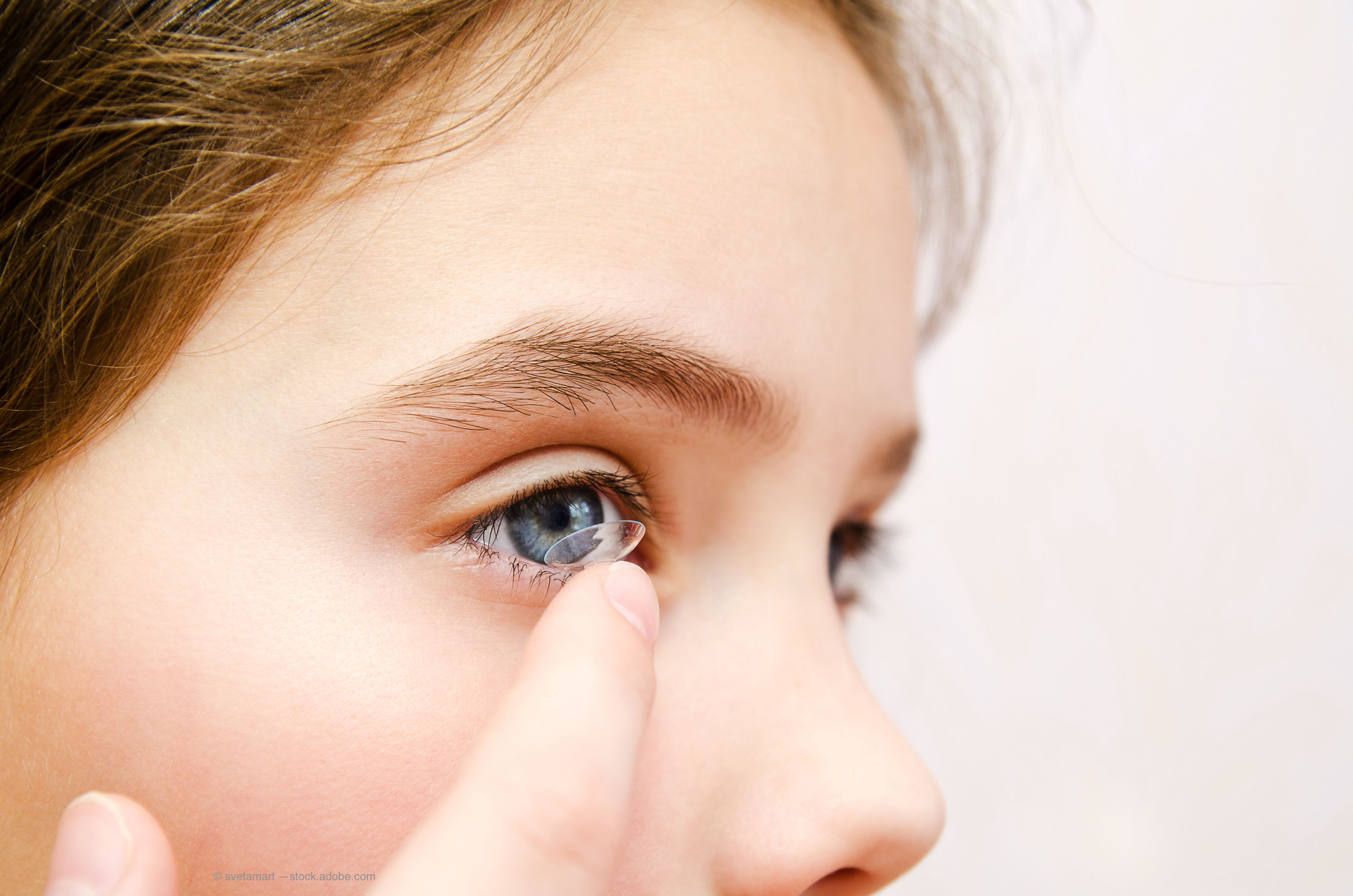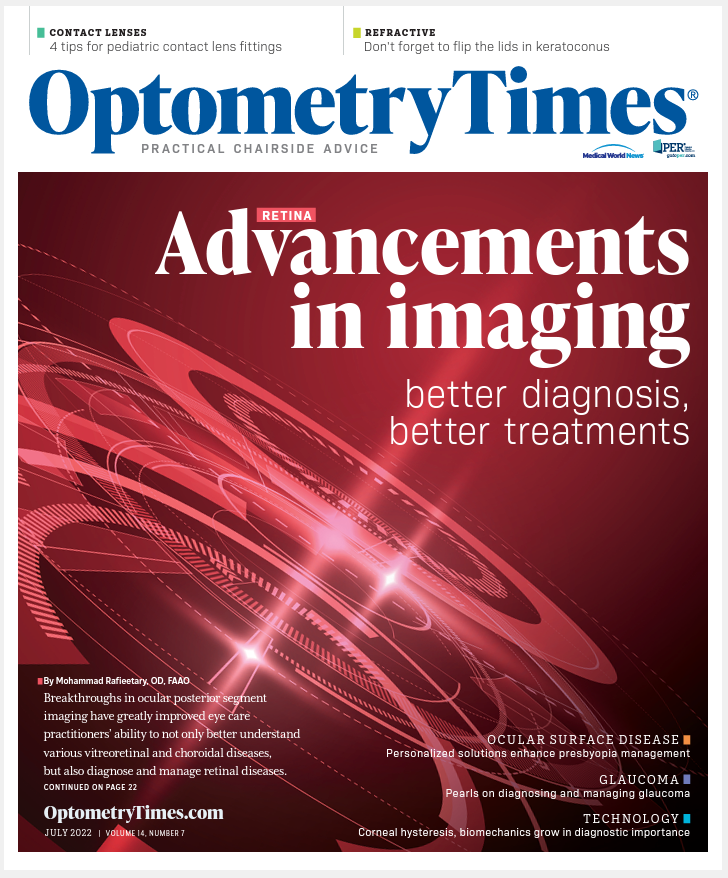4 tips for pediatric contact lens fittings
Follow this expert advice for an easy navigation process.

Since soft contact lenses were introduced for myopia, an increasing number of young children have come to the exam chair for an initial contact lens fitting.
Contact lenses provide myriad benefits for children, including safety during sports and an aesthetically pleasing appearance for high refractive errors. But even for adults, adapting to wearing contact lens can be challenging, and for children more so.
Here are tips for fitting contact lenses in younger children:

Tip #1: Expect to have more than 1 training session
Pediatric patients are often exhausted after 30 minutes of attempting to insert and remove their new contact lenses. Their eyelids feel sore from all the tugging and their eyes look redder than when they initially came in due to the irritation. It’s a frustrating process for them.
Instead of pushing the child further, it may be better to step back and commend them for the progress they have made that day and recommend picking it back up in a few days.
This gives patients a fresh start on a new day and they are usually much more comfortable during their second visit. This may also prevent them from becoming overly frustrated during the new fitting process.
“Don’t be concerned about having more than 1 training session; expect it in the schedule. With a reliable tech, this should not take up much chair time.”
Tip #2: Practice using artificial tears
If a pediatric patient requires a second training session on inserting and removing lenses, give them something productive to do between visits. Instruct the parent to purchase a bottle of artificial tears, such as Alcon Systane Complete, so the child can practice opening up their eyelids and looking straight at the bottle.
This allows them to become more accustomed to touching their eyelids and bringing a foreign object closer to their eye.
Even before the initial fitting appointment, this can be quite beneficial. Practicing with artificial tears after a comprehensive eye exam and before the initial contact lens fitting visit will result in a smoother training session.
Tip #3: Push for daily lenses whenever possible
Though some cases with higher prescriptions have limited parameters, daily contact lenses are often possible for most children. Due to the influx of new responsibilities that come with wearing contact lenses, it may be easier to eliminate the burden of cleaning and storing them.
Daily contact lenses would also remove the need for parents to keep track of when their child’s lenses must be thrown out, whether monthly or biweekly. Most importantly, daily contact lenses are a safer option associated with a reduced risk of infection.1
Some recommended daily disposable brands that are easier for younger patients to handle include Bausch + Lomb Infuse and CooperVision MyDay.
Tip #4: Make contact lens hygiene easy to remember
Maintaining proper contact lens hygiene is one of the biggest worries for both parents and providers of pediatric patients. Will they remember to wash their hands? Will they put in a lens that fell on the ground? Will they share the lens with their friends?
Children lose interest when presented with a boring monologue. Instead, make it interactive by asking them questions.
Questions such as “What would you do if your best friend asks to try on your contacts?” or “If you go to the lake with your family, can you swim with your contacts in?” are usually received with enthusiasm.
This is a fun way to test young patients’ understanding of contact lens hygiene while ingraining the topic in their memory.
On a more reassuring note, it is very safe to prescribe contacts for children. The reported cases of contact lens–related microbial infections in children age 8 to 15 years are in fact lower than those among teenagers and young adults.2
Further, data show that children in elementary and middle school are able to wear soft contact lenses with little to no ocular health consequences.3
Introducing contact lenses to children can be very rewarding, and is an excellent way to expand a practice and patient base. By using these simple tips, optometrists, parents, and children can all have a pleasant experience.
References
1. Bullimore MA. The safety of soft contact lenses in children. Optom Vis Sci. 2017;94(6):638-646. doi:10.1097/OPX.0000000000001078
2. Chalmers RL, Wagner HG, Mitchell GL, et al. Age and other risk factors for corneal infiltrative and inflammatory events in young soft contact lens wearers from the Contact Lens Assessment in Youth (CLAY) study. Invest Ophthalmol Vis Sci. 2011;52(9):6690-6696. doi:10.1167/iovs.10-7018
3. Woods J, Jones D, Jones L, et al. Ocular health of children wearing daily disposable contact lenses over a 6-year period. Cont Lens Anterior Eye. 2021;44(4):101391. doi:10.1016/j.clae.2020.11.011

Newsletter
Want more insights like this? Subscribe to Optometry Times and get clinical pearls and practice tips delivered straight to your inbox.